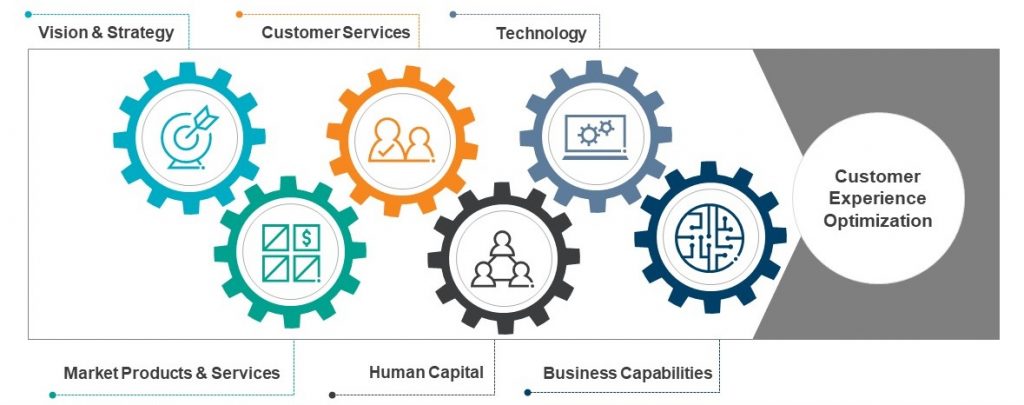In a digital world where companies must constantly adapt to change and compete fiercely for market share, the voice of the customer (VoC) provides critical information to company leadership about how they need to adjust and drive their strategic priorities. But how can organizations ensure that they are listening to the VoC and delivering the customer experience (CX) that will position them as leaders?
Like every other business area, CX is subject to risk – whether that risk stems from inconsistent communication processes, high employee turnover or gaps in data security. And, just as in every other business area, an honest, objective, structured assessment can help companies align their goals, close gaps and ensure that CX is a key element of the organization’s overall strategy.
Executives Worry About Risk – Including CX Risk
Protiviti and North Carolina State University’s Enterprise Risk Management (ERM) Initiative conducted a survey of more than 730 directors and executives to obtain their views on risks likely to affect their organizations in 2018. Seven of the top 15 risks identified relate directly to the critical role CX plays in an organization, underscoring the importance of having a robust VoC program to enhance the overall customer experience.
These risks are:
- “Rapid speed of disruptive innovations and/or new technologies within the industry may outpace the organization’s ability to compete and manage risk appropriately, without making significant changes to our business model.”
- “Our organization’s culture may not sufficiently encourage the timely identification and escalation of risk issues that have the potential to significantly affect our core operations and achievement of strategic objectives.”
- “Inability to utilize data analytics and big data to achieve market intelligence and increase productivity and efficiency may significantly affect our management of core operations and strategic plans.”
- “Social media, mobile applications and other internet-based applications may significantly impact our brand, customer relationships, regulatory compliance processes and/or how we do business.”
- “Sustaining customer loyalty and retention may be increasingly difficult due to evolving customer preferences and demographic shifts in our existing customer base.”
- “Shifts in social, environmental, and other customer preferences and expectations may be difficult for us to identify and address on a timely basis.”
- “Opportunities for organic growth through customer acquisition and enhancement may be significantly limited for our organization.”
Using a CX Audit to Identify Gaps and Strengths
- Customers bail on a transaction due to poor service 78 percent of the time.
- Ninety-one percent of customers will not return to a business after a poor experience.
- The cost of acquiring a new customer is five to 25 times the cost of retaining an existing one.
Most organizations know that delivering an outstanding CX is essential to their success, but many are missing a major element in their CX programs: a clear process to evaluate the ecosystem of people, processes and technology that support the CX. An evaluation ensures that the CX program supports the overall business strategy and is responsive to market trends and expectations.
This evaluation could be performed directly through the VoC program itself and all the enabling processes and operations, or indirectly through customer touch points throughout the organization. Either way, the objective is to identify key aspects of CX that align with the business’s overall strategic objectives and link to positive financial outcomes. Then, the organization can build up these aspects while also addressing any weaknesses.
Protiviti and MaritzCX, a CX research firm, have developed a CX audit to address the need to evaluate CX. The CX audit is based on a six-phase approach and methodology for identifying, assessing and evaluating all aspects of the CX within an organization.

Organizations can use the CX audit process to address risks, identify key findings and develop a road map for initiatives that will help align their CX program with their strategic priorities. By reviewing and assessing the six critical business areas outlined below, management will be able to understand the correlation between these areas and the CX and garner customer insights to drive necessary change.
- Vision and Strategy – Reviewing business strategy and the management of strategic initiatives against the CX and the overall vision of the organization.
- Market Products and Services – Evaluating markets and customers, as well as capabilities related to service and delivery.
- Customer Services – Identifying customer support and customer operations and reviewing their overall effectiveness.
- Human Capital – Assessing whether employees are performing in accordance with formalized CX policies and procedures.
- Technology – Reviewing the CX technology strategy, architecture, security, privacy and data-protection controls.
- Business Capabilities – Understanding CX organizational change management and key business intelligence (BI) processes.
The CX Audit Value Proposition
CX audits deliver value by providing organizations with an independent assessment of all critical customer touch points and important and actionable insights. Following a CX audit, organizations will have a clear set of findings across the areas of focus outlined above that provide them an opportunity to achieve the following results:
- Improved business decisions through better alignment with overall strategy
- Increased operating effectiveness and reduced administrative costs
- Enhanced controls in critical CX business processes
- Quick and effective root-cause analysis of CX gaps
- Improved collaboration in key CX functions
- Enhanced management of BI related to CX
- Enhanced protection of key customer data assets
Companies today must not only manage the risk of constantly changing technology and other innovations but also understand how those changes affect their customers’ experience. Providing an end-to-end view of the CX within a business and technology context through a risk-based CX audit can help organizations achieve the necessary alignment that will drive success. The process also will help position the CX program as a core element of the company’s overall business and technology strategy.






